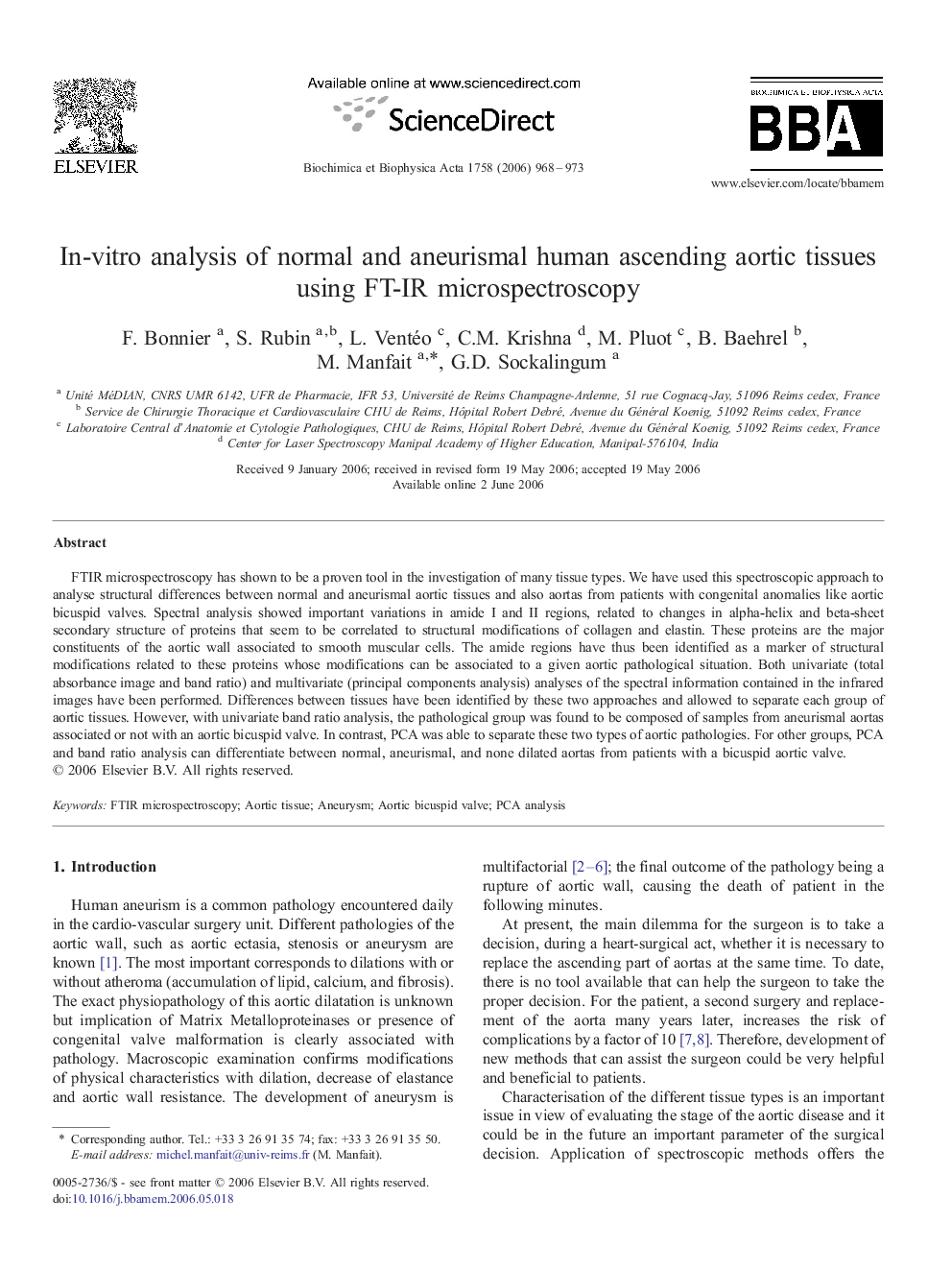| Article ID | Journal | Published Year | Pages | File Type |
|---|---|---|---|---|
| 1946110 | Biochimica et Biophysica Acta (BBA) - Biomembranes | 2006 | 6 Pages |
FTIR microspectroscopy has shown to be a proven tool in the investigation of many tissue types. We have used this spectroscopic approach to analyse structural differences between normal and aneurismal aortic tissues and also aortas from patients with congenital anomalies like aortic bicuspid valves. Spectral analysis showed important variations in amide I and II regions, related to changes in alpha-helix and beta-sheet secondary structure of proteins that seem to be correlated to structural modifications of collagen and elastin. These proteins are the major constituents of the aortic wall associated to smooth muscular cells. The amide regions have thus been identified as a marker of structural modifications related to these proteins whose modifications can be associated to a given aortic pathological situation. Both univariate (total absorbance image and band ratio) and multivariate (principal components analysis) analyses of the spectral information contained in the infrared images have been performed. Differences between tissues have been identified by these two approaches and allowed to separate each group of aortic tissues. However, with univariate band ratio analysis, the pathological group was found to be composed of samples from aneurismal aortas associated or not with an aortic bicuspid valve. In contrast, PCA was able to separate these two types of aortic pathologies. For other groups, PCA and band ratio analysis can differentiate between normal, aneurismal, and none dilated aortas from patients with a bicuspid aortic valve.
